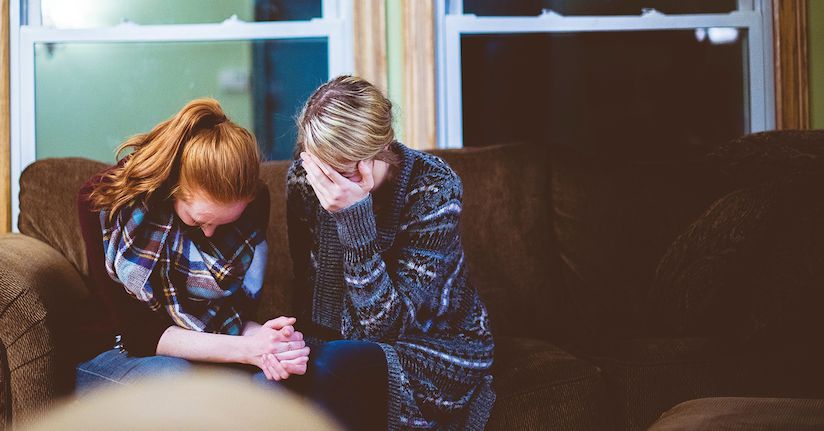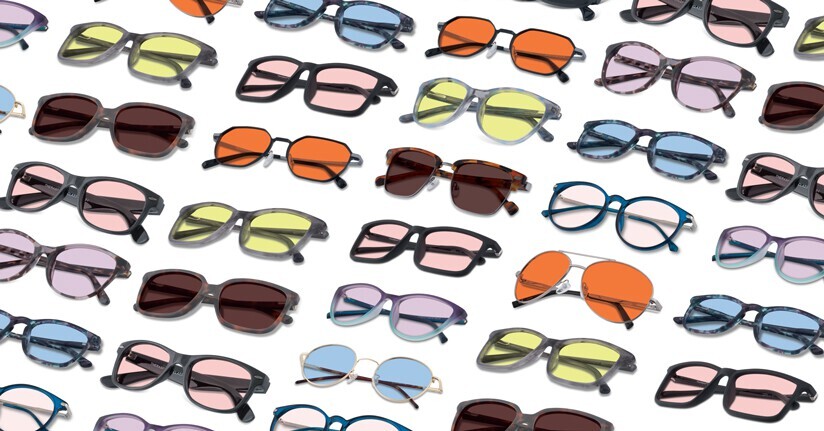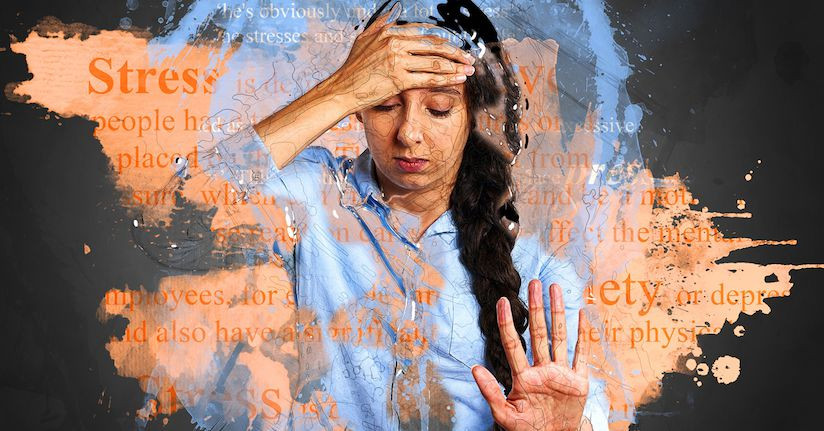The Stress and Migraine Connection
It is well known that certain experiences can trigger migraine attacks, including weather and barometric pressure changes, smells and perfumes, light sources, sleep issues, menstruation, and others. Not surprisingly, stress—which can lead to a multitude of physical symptoms—is also often reported as a leading migraine trigger. So much so that some have even adopted the term “stress migraine,” although this is not a medically-recognized diagnosis. Regardless of the terminology, there is a unique connection between the headache disorder and stress.
How Migraine is Impacted by Stress (and Vice Versa)
Research has suggested that stress may be a precursor in as many as 62 to 80 percent of migraine attacks.1,3,4 Other studies have shown that at least three out of every four patients with migraine (both with and without aura) believe that stress has acted as a direct catalyst for attacks. Those with chronic migraine have also reported higher levels of stress, with research showing that psychological anxiety in the several days leading up to a migraine attack plays an important role in migraine occurrence.2 Amazingly, stress can actually cause migraine to develop for certain patients with a higher risk for the headache disorder (e.g. someone with a family history of migraine); furthermore, stress may worsen migraine over time for those with episodic attacks and ultimately lead to increasing chronicity.11
How Stress Triggers Migraines
The fact is multiple “stressors” can lead to migraine attacks. Sometimes it is the accumulation of multiple difficult situations or activities; other times it is tied to specific life-changing events. Generally, there are a few different categories of stressors of which people with migraine should be aware:3
- Physical, environmental and other external stressors (e.g. bright light)
- Psychological stressors such as trauma (emotional and/or physical), socioeconomic and/or social stressors
- Physiological stressors (e.g. menstruation)
Many patients report that they experience a migraine after a stressful situation. Although post-stress migraine attacks can occur within minutes or hours, they more often manifest within a few days. Specifically, migraineurs have cited an increase in daily hassles 1-3 days prior to attacks.5 Not only does this lead to greater feelings of stress and anxiety, but it also enhances mood swings, irritability, and fatigue. This supports other findings that daily challenges are one of the leading causes of stress-triggered migraines.
Post-Traumatic Stress Disorder and Migraine
A profound, traumatic event or major life change can also be a stressor that brings on an attack. And these types of occurences can sometimes have a long lasting effect on a person’s physical and emotional health beyond individual migraine attacks—as evidenced by a higher prevalence of anxiety, depression and post-traumatic stress disorder (PTSD) among those with the primary headache condition.3,4,7
Categorized as an anxiety disorder, PTSD is a condition sparked by a traumatic experience or event, such as military combat experiences, victim of terrorism or crime, and physical or sexual abuse.7 And the link between PTSD and migraine runs deep. As many as one in four patients with a primary headache disorder may also fulfill the diagnostic criteria for PTSD; that number increases to 50% specifically among military veterans with migraine. Furthermore, there is a greater likelihood for PTSD development among those with chronic migraine.7,10 Those with both conditions also have poorer treatment outcomes and greater disability when compared to those with only migraine. In addition, new evidence has shown that traumatic events and PTSD may actually increase attack frequency, at least among an adolescent population.

"Let-Down" Stress and Migraines
Ironically, the release of stress or "let down" period can also trigger migraine attacks. A recent study noted that those whose stress levels decreased one day to the next experienced a higher risk for developing an attack. In fact, the first 6 hours following a perceived stress reduction is a period of high vulnerability for a person with migraine—research has shown a five-fold increase in attacks during this time period. This has led some experts to suggest that let down or relaxation is a more prominent cause of attacks than stress itself.
The Effects of Stress on Migraine Patients
What can people with migraine expect if they also have high stress? Research gives us insight into these important side effects. For instance, when a person is exposed to repeated stressors, actual physical changes can occur within the body. Chronic stress has the ability to change how a person responds to tense or difficult situations as well as change brain structure and networks.3 These changes represent one of the theories as to why stress can actually lead to migraine attacks as well as particularly affect those with chronic migraine.
In fact, those with chronic migraine have been shown to experience higher levels of perceived stress overall and also had lower quality of life.4 They are also more likely to have poor outcomes to acute treatment.6
Specific symptoms may also worsen with increasing stress,6 such as:
- Photophobia (painful light sensitivity)
- Bilateral migraine pain
- Phonophobia (sensitivity to sound)
Photophobia is particularly interesting because it is an independent factor in increasing stress and anxiety overall, especially for those with migraine. And you may be more likely to develop painful sensitivity to light (not just worsen it) if you have higher stress. You can read more about the connection between light sensitivity, stress and anxiety here.
Ways to Reduce Stress

Some examples of stress reduction techniques include:8,9
- Regular exercise has been reported to reduce stress hormones, improve sleep and improve mental well-being. Aromatherapy with scents like lavender, vetiver, rose, bergamot, and others may be helpful with anxiety and sleeping difficulties.
- Reduction in caffeine intake
- Journaling
- Yoga
- Mindfulness and/or meditation
- Deep breathing
- Pet therapy
- Biofeedback therapy is a technique which teaches a person to control involuntary physical body responses like muscle tension, blood pressure and/or heart rate.
- Migraine glasses for light sensitivity can reduce the physical symptoms and emotional anxiety of light-related triggers (such as fluorescents).
What is exciting is that several of these techniques—namely yoga, meditation, biofeedback and migraine glasses—also have clinical evidence showing that they can improve migraine frequency, intensity and duration. Click below to read more about each of them.
Note: Prior to starting any stress reduction techniques, it is important to speak with a headache specialist. Migraine manifests differently for each person and some of the methods included below may actually be triggers for certain patients. For example, if strong scents and perfumes are bothersome, aromatherapy may not be the best option.
What other stress reduction alternatives have you tried? Let us know what has worked for you by commenting below.
References:
1Migraine in America 2016. (n.d.) Retrieved from https://migraine.com/graphics/in-america-studies/migraine-in-america-2016/2/.
2Hashizume M, Yamada U, Sato A, Hayashi K, Amano Y, Makino M,Yoshiuchi K, Tsuboi K. Stress and psychological factors before a migraine attack: A time-based analysis. Biopsychosoc Med. 2008; 2: 14.
3Maleki, N., Becerra, L., and Borsook, D. Migraine: Maladaptive Brain Responses to Stress. Headache. 2012 Oct; 52(Suppl 2): 102–106.
4Hye-Jin Moon, Jong-Geun Seo, and Sung-Pa Park. Perceived stress in patients with migraine: a case-control study. J Headache Pain. 2017; 18(1): 73.
5Sorbi, MJ., Maassen, GH., Spierings, EL. A time series analysis of daily hassles and mood changes in the 3 days before the migraine attack. Behav Med. 1996 Fall;22(3):103-13.
6Cha MJ, Kim BK, Moon HS, et al. Stress is associated with poor outcome of acute treatment for chronic migraine: A multicenter study [published online November 2, 2017]. Pain Med. doi:10.1093/pm/pnx269.
7Peterlin, LB, Satnam, NS and Tietien, GE. Post-Traumatic Stress Disorder and Migraine: Epidemiology, Sex Differences, and Potential Mechanisms Headache. 2011 Jun; 51(6): 860–868.
8Jennings, KA. 16 Simple Ways to Relieve Stress and Anxiety (September 1, 2016) Retrieved from https://www.healthline.com/nutrition/16-ways-relieve-stress-anxiety.
9Minen M. Stress and Migraine. (January 11, 2016) Retrieved from https://americanmigrainefoundation.org/understanding-migraine/stress-and-migraine/.
10Peterlin BL, Tietjen GE, Brandes JL, Rubin SM, Drexler E, Lidicker JR, Meng S. Posttraumatic stress disorder in migraine. Headache. 2009 Apr;49(4):541-51. doi: 10.1111/j.1526-4610.2009.01368.x. Epub 2009 Feb 25.
11Sauro KM, Becker WJ. The stress and migraine interaction. Headache. 2009 Oct;49(9):1378-86. doi: 10.1111/j.1526-4610.2009.01486.x. Epub 2009 Jul 8.

TheraSpecs® Glasses for Light Sensitivity
Find the glasses that fit your needs and lifestyle, and stay protected from screens, fluorescents, unwanted blue light, sunlight, flashing lights, and more.
Shop Now



